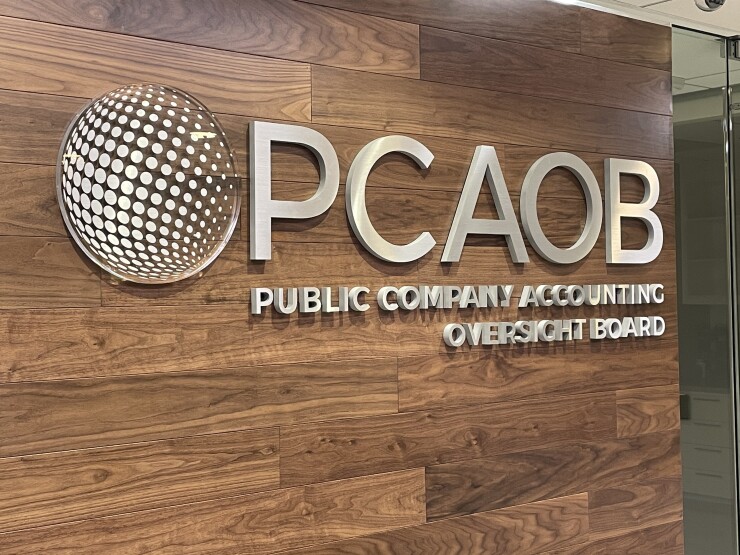PCAOB saw increase in deficient audits last year

The Public Company Accounting Oversight Board is finding deficiencies in about one-third of the audits it inspected in 2021, a disturbing increase from 2020 in a trend the PCAOB and the auditing profession had hoped to reverse.
The PCAOB released a report Thursday previewing its inspection observations of the 141 audit firms its staff inspected last year. PCAOB staff anticipates approximately 33% of the audits reviewed will have one or more deficiencies that will be discussed in Part I.A of the individual audit firm’s inspection reports, up from 29% in 2020. Part I.A of the individual audit firm’s inspection report describes the deficiencies, if any were found, that appeared to be of such significance that PCAOB staff believes the audit firm, at the time it issued its audit report or reports, had not obtained sufficient appropriate audit evidence to support its opinion on the public company’s financial statements and/or internal control over financial reporting.
“Higher deficiency rates in 2021, coupled with the fact that the PCAOB is also seeing an increase in comment forms for 2022, are a warning signal that the audit profession needs to sharpen its focus on improving audit quality and protecting investors,” said PCAOB Chair Erica Williams in a statement. “The PCAOB will continue our work to increase audit quality by modernizing our standards, enhancing our inspections, and strengthening our enforcement.”

Auditing firms, especially the largest ones with international reach, are often quick to promote how much their audit quality has improved. Several have set up audit quality committees and councils and brought in outside advisors. Yet problems with audit deficiencies have persisted as firms have increasingly turned to technology to help them speed and automate the process rather than relying on experienced human observation.
Comment forms are the initial communication from the PCAOB inspectors to audit firms about potential deficiencies they have spotted. Firms are then given the chance to respond in writing to the comment form.
The PCAOB’s 2021 preview report also found its staff have continued to identify auditing deficiencies that have recurred for many years. They expect that approximately 40% of the audits reviewed will have one or more deficiencies discussed in Part I.B of the individual firm’s inspection reports, up from 26% in 2020. In Part I.B of the inspection reports, the PCAOB’s staff share their observations on examples of noncompliance with PCAOB standards or rules that don’t relate directly to the sufficiency or appropriateness of evidence the audit firm obtained to support its opinions, such as critical audit matters, Form AP, and certain independence related deficiencies.
The PCAOB staff found that a big part of the increase in deficiencies was due to an increase in deficiencies related to critical audit matters, especially among triennially inspected audit firms (those with fewer than 100 public company audit clients). Dec. 15, 2020 was the effective date for the requirements related to CAMs for companies other than large accelerated filers, meaning that many firms were complying with CAMs requirements for the first time. The PCAOB released a separate report Wednesday on critical audit matters, and found that auditing firms are actually reporting on fewer CAMs than when the PCAOB began requiring them to do so (see story).
Among the CAMS-related deficiencies, they most often occurred when auditor procedures to determine CAMs didn’t include every matter that should have been analyzed as a potential CAM. These instances of noncompliance don’t necessarily mean that other CAMs should have been communicated in the auditor’s report.
Some audits have both Part I.A and Part I.B deficiencies, so the PCAOB staff anticipates that approximately 55% of the 690 audits the PCAOB reviewed in 2021 will have one or more Part I.A and/or Part I.B deficiencies, up from 44% percent in 2020.
The PCAOB inspections staff also saw some good practices that could be effective when it comes to improving audit firms’ systems of quality control and audit quality in general, such as making it simpler for audit firm employees to import information from their financial holdings directly into the firm’s internal tracking systems as a protection against conflicts of interest; the use (and proper integration) of specialists; stronger risk assessment; and proper timely responses to audit supervision.


